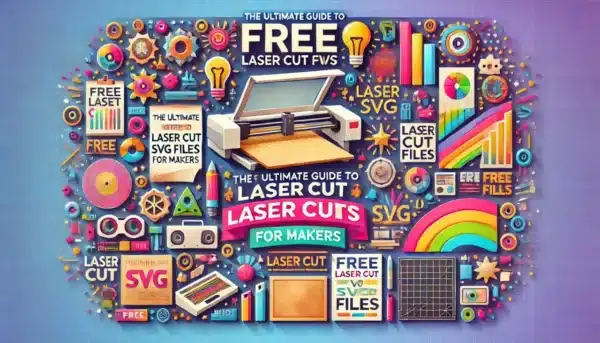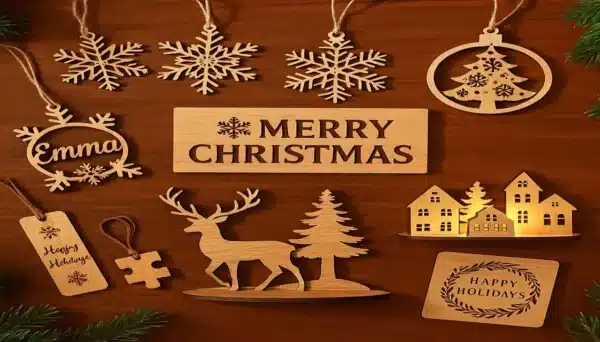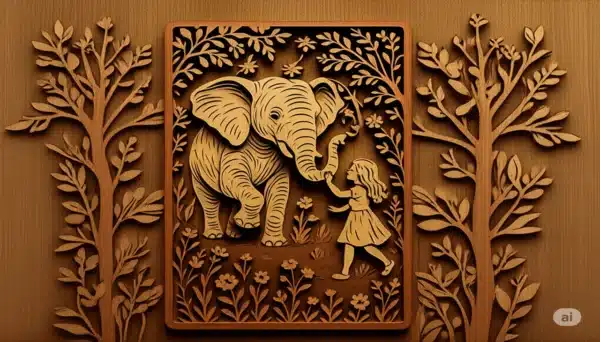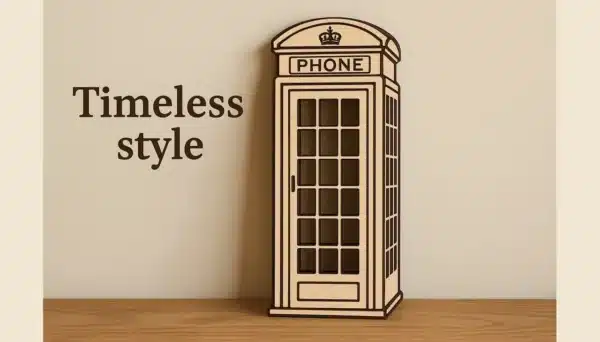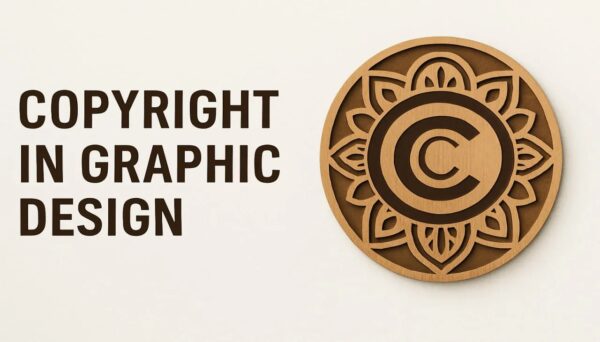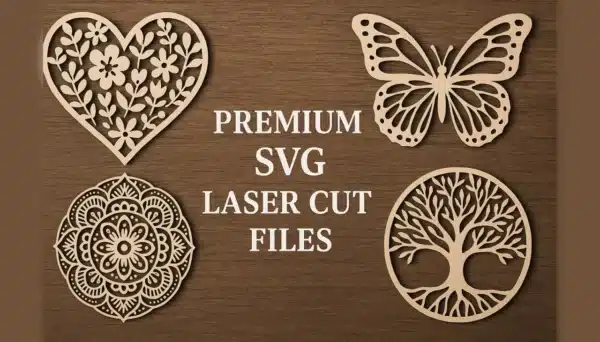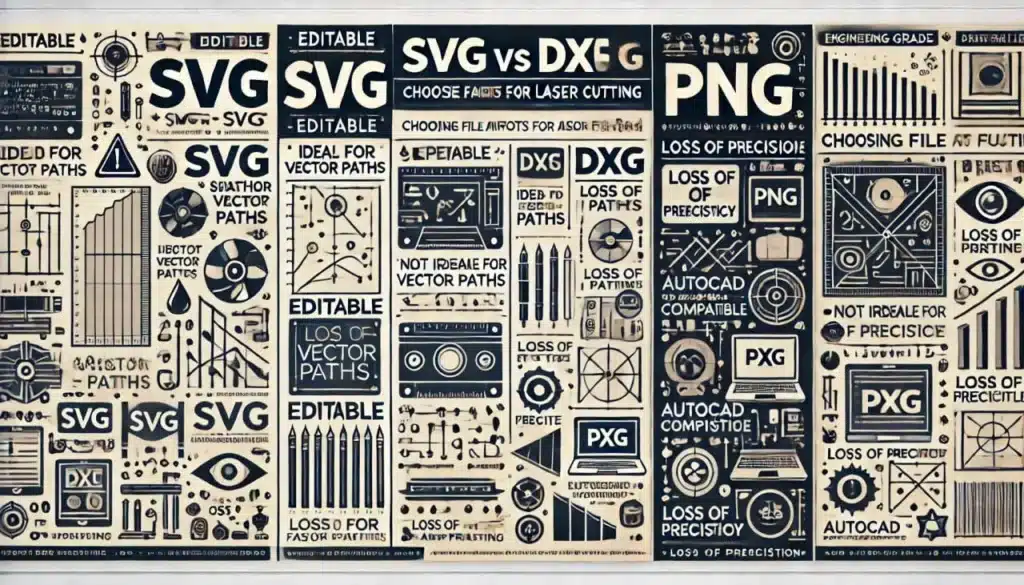
SVG vs DXF vs PNG: Choosing File Formats for Laser Cutting
- Kostiantyn Soloviei
Laser cutting file formats such as SVG, DXF, and PNG are essential knowledge for anyone in the laser cutting business or exploring digital designs for machines like Glowforge and xTool.
Understanding the unique role each of these formats plays in the design-to-cut
process is key. But which one should you use—and when?
In this guide, we’ll break down the differences between these formats, explain their ideal use cases, and help you choose the best option for your workflow and business.
What Is an SVG File?
SVG (Scalable Vector Graphics) is a vector-based file format that stores shapes, paths, and lines mathematically rather than as pixels. This means SVGs can be resized infinitely without losing quality.
Why Use SVG for Laser Cutting?
- Perfect for Cutting: Most laser cutters, including Glowforge and xTool, accept SVG files for vector cutting.
- Editable: Easily customized in design software like Adobe Illustrator, Inkscape, or CorelDRAW.
- Lightweight: Files are typically small in size and load quickly.
- Widely Supported: Compatible with most vector design software and laser cutter interfaces.
Best For:
- Intricate cut patterns
- SVG marketplaces and digital downloads
- Signage, jewelry, layered projects
What Is a DXF File?
DXF (Drawing Exchange Format) is a CAD-based vector format developed by Autodesk. It’s used extensively in engineering, architecture, and manufacturing.
Why Use DXF for Laser Cutting?
- CAD-Friendly: Ideal for users working in AutoCAD or Fusion360.
- Precise Measurements: Excellent for engineering-grade designs and parts with tight tolerances.
- Compatibility: Often used with industrial CO2 and fiber laser machines.
Considerations:
- May lose some styling or layers when exported from graphic design software.
- Not always as “clean” as SVGs when viewed in design-focused programs.
Best For:
- Engineering parts and templates
- Product design and fabrication
- CNC and industrial workflows
What Is a PNG File?
PNG (Portable Network Graphics) is a raster image format. It stores graphics using pixels, not vectors.
Why Use PNG in a Laser Cutting Workflow?
- Engraving and Etching: Ideal for photo engraving or bitmap-based raster engraving.
- Visual Mockups: Great for showcasing product previews and client proofs.
- No Cutting Paths: Not suitable for vector cutting—used only for engraving or design display.
Best For:
- Photographic engravings on wood, acrylic, or metal
- Logos and image-based textures
- Presentation and eCommerce listings
Summary Table
Feature | SVG | DXF | PNG |
Format Type | Vector | Vector | Raster (Pixel-based) |
Ideal Use | Cutting | Precision Engineering | Engraving / Display |
Resize Without Loss | Yes | Yes | No |
Editable | Yes | Yes (CAD) | No |
Suitable for Cutting | Yes | Yes | No |
Suitable for Engraving | Sometimes | Sometimes | Yes |
Final Thoughts for Laser Cutting Business Owners
Choosing the right file format can save time, improve cut quality, and optimize your production workflow. Here’s a quick rule of thumb:
- Use SVG if you’re creating or selling digital design files for craft-focused users (Cricut, Glowforge, xTool).
- Use DXF if you’re working with manufacturers, product prototypes, or engineering-based laser applications.
- Use PNG for engraving or showcasing your work online.
By understanding how each file format functions, you can tailor your offerings, streamline production, and better serve your customers—whether they’re hobbyists or high-volume clients.
Need ready-to-cut laser files in SVG or DXF format? Explore our curated collection of high-quality designs at Laser Files Freedom.
